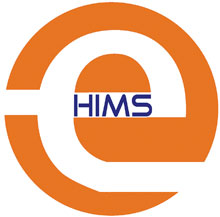  |
| HOME | THIS ISSUE | CALENDAR | GRANTS | BACK ISSUES | < BACK | NEXT > |
Health Center transitioning to electronic medical recordsby Chris DeFrancesco - April 13, 2009
|
||||
| Starting next month, patient care providers at the Health Center’s John Dempsey Hospital will have electronic access to patients’ medical records. The Health Center is preparing to introduce eHIMS, which stands for “electronic Health Information Management System.” “This will give our health care providers password-protected online access to all-inclusive hospital-based medical records for discharged patients and hospital-based ancillary testing from anywhere,” says Elena Albini, director of health information management. “Our goal is to have records scanned into the eHIMS system within 24 hours of discharge, and they will be instantly accessible once scanned.” A patient’s eHIMS record will include his or her entire chart as it currently exists in paper format, including all handwritten documents, dictated reports, and electronically fed reports. It will be considered that patient’s legal medical record after discharge. “The patient’s chart will always be accessible,” says Dr. Richard Simon, chief of the medical staff. “No more trips to Medical Records, and no more waiting for medical records to be pulled.” Going paperless also allows simultaneous access to patient information, editing of dictated reports, completion of incomplete records, and signature approvals, which will be done electronically and remotely. “In the dark hours of the night, being able to immediately access data from prior hospital stays is priceless,” says Dr. Daniel McNally, who chairs the Health Center’s Health Information Management Committee. “With this we will be able to access our hospital records and hospital-based services data whenever it’s needed, and not have to count on someone finding a chart. That’s a big safety issue.” Handwritten documents in the patient’s record, such as progress notes, flow sheets, nursing notes, assessments, advance directives, and care plans, will be scanned. Other documents that will be part of a patient’s eHIMS record include discharge summaries, operative reports, lab reports, radiology reports, and anatomic pathology reports.
“We have tremendously more information about a patient in one place than doctors in the community do,” McNally says. “We have a unique integrated system here, where we can access all the care someone gets at UConn. While the rest of the world is talking about demonstrations of portable records, we and our patients are lucky to work in a system where we can access this information so easily.” Preparation for the changeover to the eHIMS system will involve training for about 750 people, most of them physicians who will take a 15-minute online tutorial. Other health care providers, such as nurses, nurse managers, medical assistants, health unit clerks, practice managers, therapists, and certain ancillary staff will attend an hour-long classroom session. “Docs will like this,” McNally says. “They can sign their charts, complete them, edit them, all electronically. Everything will be up to date. Everything will be available.” Adds Simon, “It will make their life easier. There’s not much of a learning curve. The system is very intuitive.” Beyond the Health Center, the concept of going paperless with medical records fits into a broader plan to improve the American health care system. “Ultimately the gain in the global sense will be interchangeability among hospitals,” says Simon, “and the ability to encode and to create portable patient records.” More information about eHIMS is available at http://ehims.uchc.edu. |
| ADVANCE HOME UCONN HOME |

